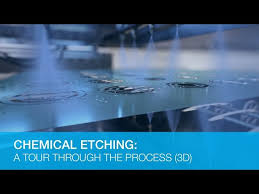
What is Chemical Etching?
Chemical Etching Imagine you have a piece of metal and want to remove specific parts of it to create a unique shape. Chemical etching is like using a special liquid to “eat away” those unwanted sections. It’s a bit like how acid dissolves a piece of candy, but in a very controlled way.
| Feature | Description |
| What it is | A process that uses a chemical solution to remove specific areas of metal, creating intricate shapes. |
| Analogy | Like baking a cake: the metal is the batter, the mask is the pan, and the etchant is the heat. |
| Process | 1. Mask: Apply a protective layer to areas to be preserved. <br> 2. Etchant: Apply a chemical solution to dissolve exposed metal. <br> 3. Reveal: Remove the mask to reveal the desired shape. |
| Key Advantages | High precision, versatility for various metals, cost-effectiveness for large quantities. |
| Applications | Electronics, medical devices, industrial manufacturing. |
How Does it Work?
- The Mask: First, we cover the parts of the metal we want to keep with a special protective layer called a “mask.” This mask is like a shield, protecting the metal underneath.
- The Etchant: Then, we apply a special liquid called an “etchant” to the metal. This etchant reacts with the metal, slowly dissolving the areas that are not covered by the mask.
- The Reveal: Once the etching is complete, we remove the mask to reveal the desired shape.

Think of it like baking a cake:
- The metal is like the cake batter.
- The mask is like the baking pan.
- The etchant is like the heat that cooks the cake, but only within the pan’s shape.
Why is Chemical Etching Useful?
- Precision: It can create incredibly detailed and intricate shapes that are difficult to achieve with other methods.
- Versatility: It can be used on a wide range of metals, from thin sheets to thicker plates.
- Efficiency: It can often be faster and more cost-effective than other manufacturing processes, especially for large quantities.
Where is Chemical Etching Used?
- Electronics: Creating tiny components for computers and phones.
- Medical Devices: Making precise parts for implants and surgical tools.
- Industrial Applications: Manufacturing intricate parts for machinery and aerospace.
In a nutshell, chemical etching is a fascinating process that uses the power of chemistry to create amazing things!



